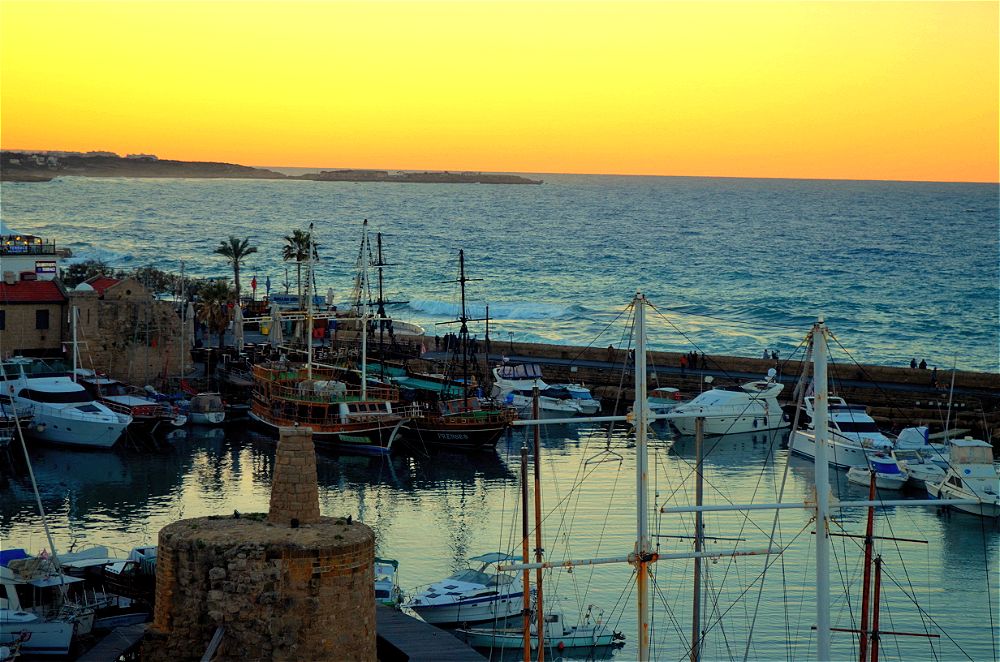ISLAND OF CYPRUS
We wanted to include the historical places of Northern Cyprus and the historical stops of the Island in this article.. The island of Cyprus, which is rumored to have taken its name from a flower called “henna flower”; It is a must-see country with its warm climate, wonderful nature, historical places, castles and cathedrals.. It also has a very colorful and vibrant nightlife.
This small island, which has been a favorite of many civilizations for centuries, actually has a great history.. When the history is big, there are many places to see.
HISTORICAL PLACES OF NORTH CYPRUS
Here is our list of historical places in Northern Cyprus we have prepared for you.
1. NICOSIA HAN
The Great Han located in Nicosia is one of the foremost of the Turkish architectural works on the island. It is accepted that it was built by Cyprus towards 1572.. Unlike its counterparts in Anatolia, the Great Han has two entrance gates.
Used first as a prison and later as a shelter for the needy, under the British rule, the Great Han was restored in 2002 and many shops were restored.
Today it is a big bazaar visited by many tourists from all over the world.. It is also one of the most important historical places of Northern Cyprus.. Büyük Han has traditional handicrafts and clothes, shops selling Cypriot souvenirs, an authentic Turkish coffee house and a restaurant serving outstanding examples of local cuisine.
Monday to Friday of the week from 08:00 to 18:00 It is open between :00 pm.
2. The construction of the Hagia Sophia Cathedral began in 1209 during the Lusignan period and was completed in the early 1300s.. After the Ottoman conquest of Cyprus in 1571, this cathedral was converted into a mosque.. Selimiye is the name of Sultan II who conquered the island.. comes from Selim. Located in Nicosia, Cyprus, this magnificent building is the most spectacular place of worship and one of the most famous historical places in Cyprus.
3. KYRENIA CASTLE
The castle, which is the symbol of Kyrenia, was built in the 7th century AD to protect the city against Arab raids.. It was built by the Byzantines in the 19th century and later hosted many cultures.. While walking around the castle, you can see the traces of Byzantine, French dynasty, Lusignans, Venetian, Ottoman and British civilizations at the same time.. There are many restaurants where you can enjoy your meal accompanied by the magnificent view of Girne Castle.
The castle, located in the northeast of Kyrenia, which is one of the most popular touristic resorts of the island with its natural beauties and historical texture, also overlooks the port that opens to the blue waters of the Mediterranean Sea. It is one of the must-see places.
4. BARBARY MUSEUM
It is the house where the Bloody Christmas Massacre took place in the Martyr Mürüvvet İlhan Street of Kumsal District on the night of December 24, 1963 in Cyprus.. In this house, the doctor of the Cyprus Turkish Forces Regiment, Major Nihat İlhan, his wife Mürüvvet and their three children lived.. This house in Nicosia was turned into a museum on January 1, 1966. Repaired in 1975. It was nationalized in 1980 by the decision of the Council of Ministers.. The museum building was renovated over the years and reopened with an official ceremony on February 14, 2000.
CLICK HERE for the Museum of Barbarism
5. SAINT HILARION CASTLE
It is the westernmost of the three castles built on the Beşparmak Mountains to protect the islanders against possible Arab invasions and to warn them against possible attacks.. Saint Hilarion Castle, with its 732 meters height, has a wonderful view overlooking Kyrenia and is one of the historical places to visit in Cyprus.. There are still 480 steps to climb to see the panoramic view over the castle and reach the summit.
St.. Hilarion Castle is reached from the mountain road that reaches the castle in the Bosphorus region of the Kyrenia-Nicosia highway.. The distance of the castle to the center of Nicosia is 24 kilometers, to Kyrenia 16 kilometers and to Famagusta 85 kilometers.
St.. Visiting hours of Hilarion Castle are between 09.00-17.00 in April-October in summer, and between 09.00-14.00 in winter from November-March.. The entrance fee is 9.00 TL for adults and 5.00 TL for students.
CLICK HERE for our article on Saint Hilarion Castle
6. BELLAPAIS MONASTRY
It is a monastery established on the rocks at the foot of Beşparmak Mountains in Beylerbeyi village of Kyrenia Region. Built during the Roman period between 1158-1205, it stands out as a masterpiece of gothic art and one of the most striking structures in the Near East, with additions made in the middle ages.. Its name derives from the French “Abbaye de la Paix” meaning Monastery of Peace.
After the Ottoman conquest of Cyprus, the monastery was given to the Greek Orthodox Church.. With the 1974 Cyprus Peace Operation, when the Greeks migrated to the southern part of the island, Bellapais Monastery was taken under the auspices of the TRNC Antiquities and Museums Department. The monastery, which can be seen from almost anywhere in Kyrenia, hosts an average of 20,000 local and foreign tourists per month, and sometimes hosts various music festivals.
7. CLOSED MARAŞ
Maraş in Turkish and Varosha in Greek, which was the most luxurious holiday center in the world before the 1974 Cyprus Peace Operation and located in the city of Famagusta in Northern Cyprus, with its modern architectural structures, attracted the richest guests of the world, movie stars, the most famous people of the time. hosted its favorite brands. One of the most popular touristic centers in the world 47 years ago, the Covered Varosha Area in Cyprus has been abandoned to solitude and is the ghost town of the island.. On October 8, 2020, the 2 kilometer part of Closed Maraş on the beach and the back street of the beach, Democracy Street, were opened for pedestrian crossings under the control of police and soldiers..
CLICK HERE for Our Closed Maraş Article
8. ANCIENT CITY OF SALAMIS
The Ancient City of Salamis was founded in a basin near the Kanlı creek river originating from the Troodos mountain, 6 km from the center of Famagusta, by the tribes who came from Anatolia with migrations at the end of the Bronze Age and the Achaeans from Greece.. The people of Salamis left the city due to the Arab (Islamic) raids that started in 647 AD and the ongoing earthquakes.. dates back to the end of the century. A large part of the city was excavated between 1952-1974. Excavations that were interrupted in 1974 were resumed by Ankara University in 1998.
During your visit to Northern Cyprus, you should definitely visit Salamis to witness the stories of the Ancient City of Salamis. visit.
9. BLUE KÖŞK
Blue mansion is a mansion built by lawyer and arms smuggler, Italian-born Greek Paulo Paolides, in 1956 in the recent history of Cyprus, while he was the lawyer of former Greek Cypriot President Makarios.. This mansion is designed to do unlawful works, and welcomes its guests with its unusual and interesting architecture and legendary story.
In the mansion; Paulo Paolides, a man obsessed with the number 13, has 13 bathrooms and 13 rooms, tunnels for escape, colorful tables and chairs for guests, a pool and many more Paulo belongings.. The most important feature of the mansion is that it is not visible from anywhere.
CLICK HERE for our article on the Blue Kiosk
10. NAMIK KEMAL DUNGEON AND MUSEUM
This is the dungeon where Namık Kemal, known as the Shakespeare of Turkish literature, spent 38 months of his life between 1873 and 1876 after his exile.. Namık Kemal, who was exiled by Sultan Abdülaziz, was first imprisoned in the dungeon on the lower floor of this historical building in Famagusta.. After a while, it was taken to the upper floor with the permission of the Governor of Cyprus, Veyis Pasha..







